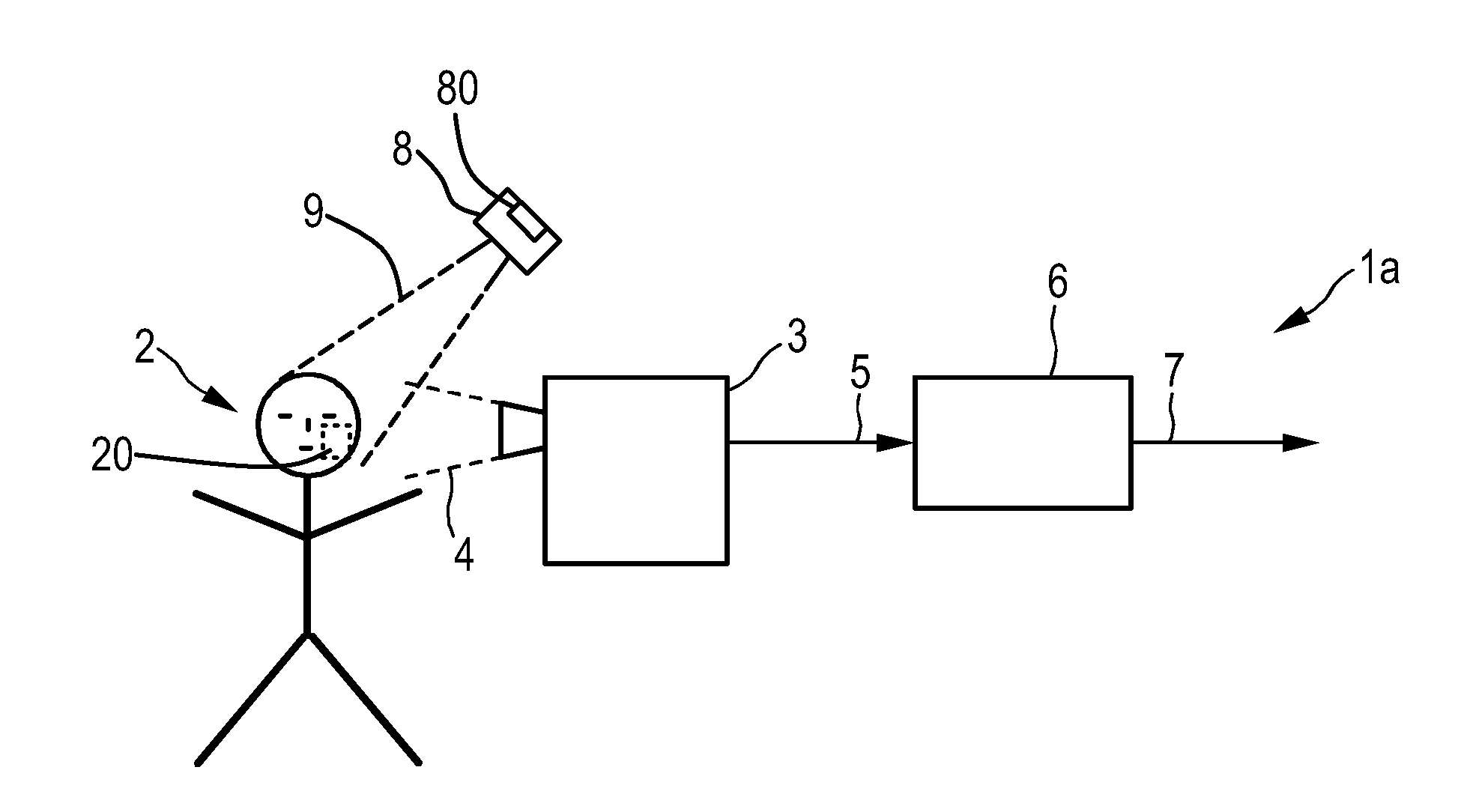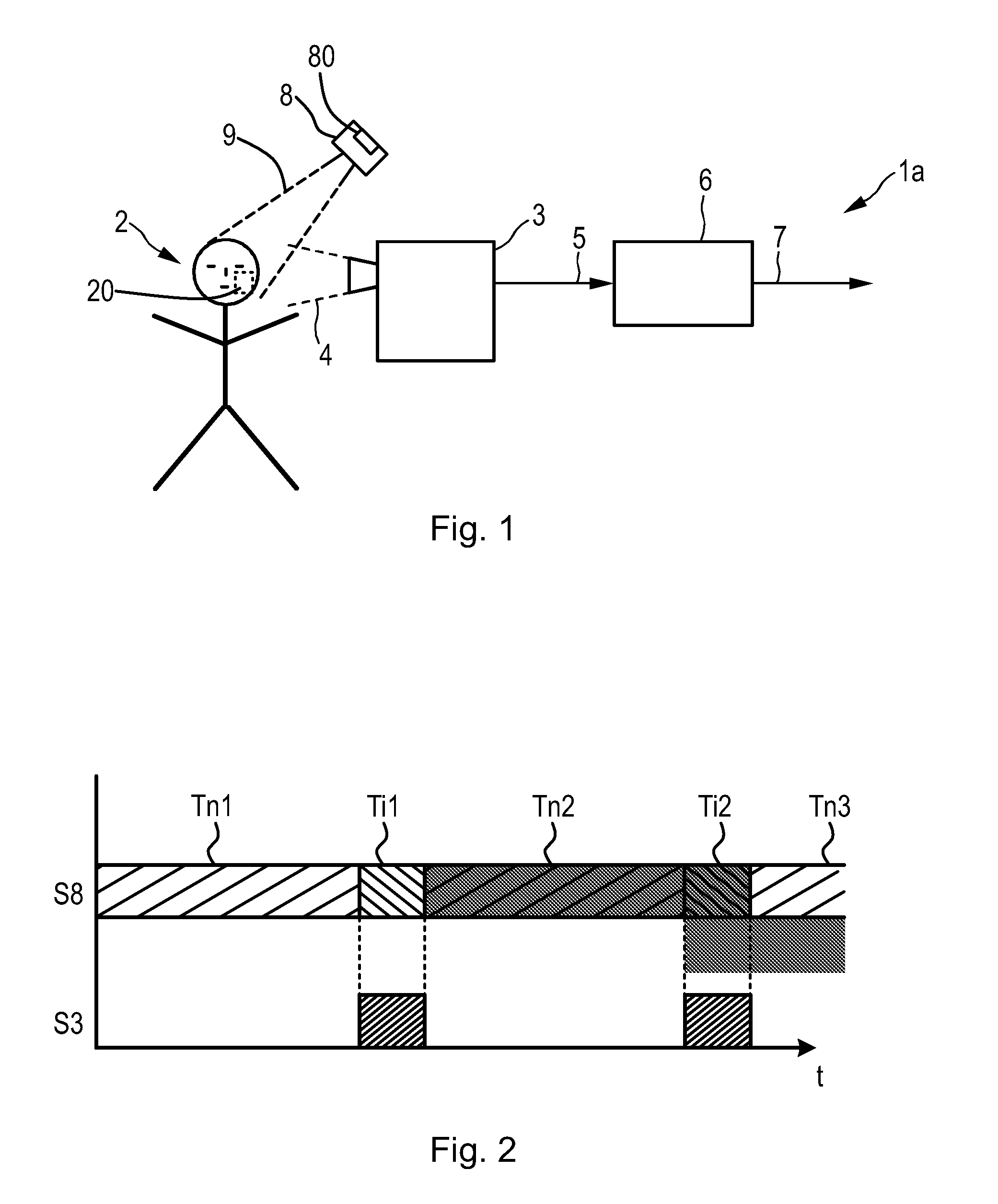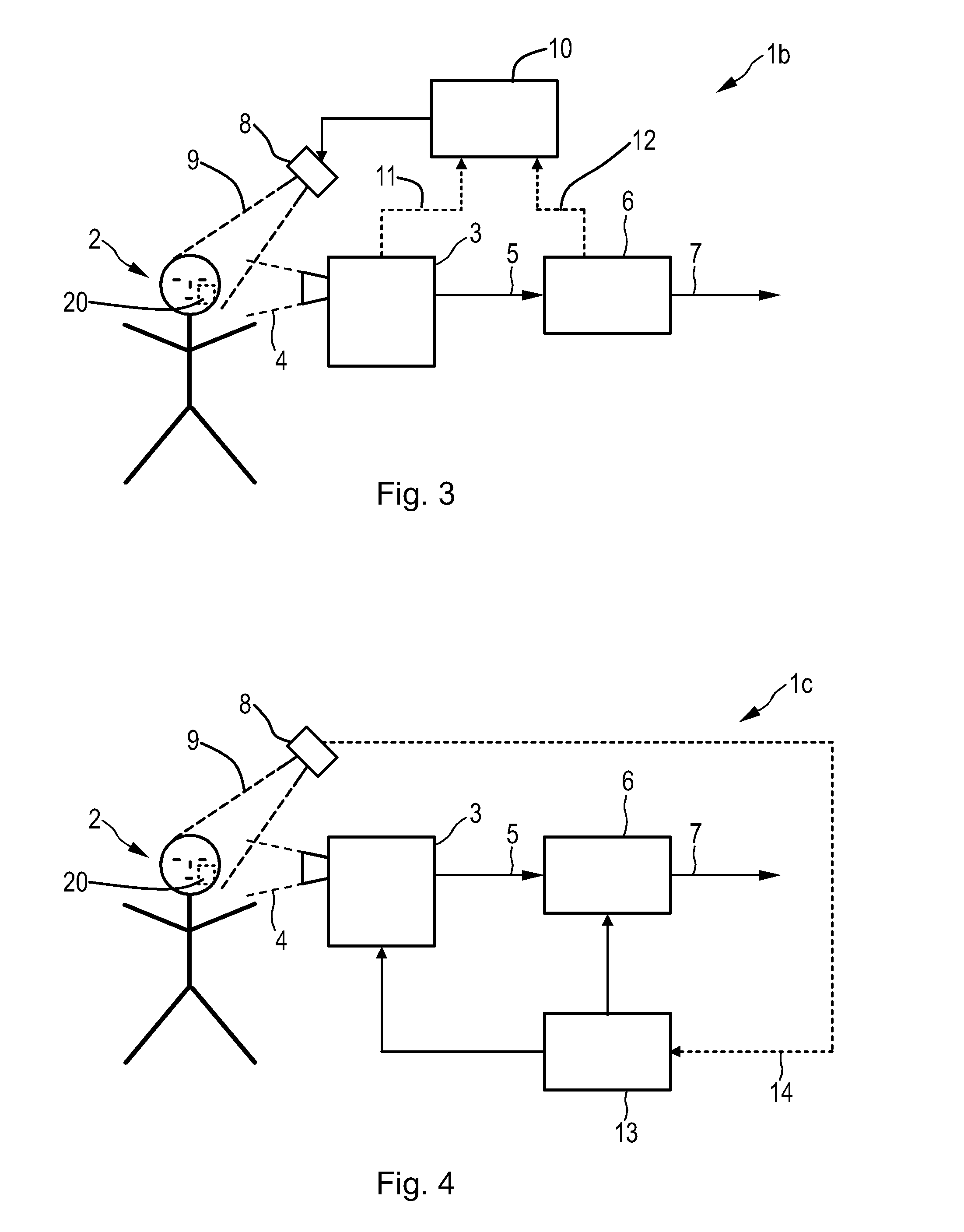Device and method for obtaining vital sign information of a living being
a technology of vital signs and devices, applied in the field of devices and corresponding methods for obtaining vital signs of living beings, can solve the problems of image-based vital signs, difficult and even impossible extraction of vital signs in some cases, and achieve the effect of improving accuracy and reliability
- Summary
- Abstract
- Description
- Claims
- Application Information
AI Technical Summary
Benefits of technology
Problems solved by technology
Method used
Image
Examples
first embodiment
[0040]FIG. 1 shows a device 1a for obtaining vital sign information of a living being 2, e.g. a patient in a hospital, an elderly person monitored in the bed at home or a person doing sports in a fitness club, according to the present invention. The device 1a comprises a detection unit 3 for receiving light 4 in at least one wavelength interval reflected from at least a region of interest of the living being 2 and for generating an input signal 5 from the received light 4. The detection unit 3 is, for instance, configured to register spatio-temporal variations of received light 4, and is preferably an imaging unit for taking images, such as a video camera that substantially continuously or at regular intervals takes images of the living being 2 or at least a region of interest (ROI) 20 of the living being 2.
[0041]The device 1a further comprises a processing unit 6 for processing the input signal 5 and deriving vital sign information 7 of said living being 2 from said input signal 5 ...
second embodiment
[0056]FIG. 3 shows a device 1b for obtaining vital sign information of a living being 2. In this embodiment employing an active mode a control unit 10 is provided for controlling the illumination unit 6 to illuminate at least said region of interest 20 during said illumination intervals with light optimized for vital sign measurements.
[0057]In an implementation the control unit 10 is controlled by a user or a remote operator or is preprogrammed.
[0058]Alternatively, the control unit 10 is coupled to the detection unit 3 and / or the processing unit, as indicated in FIG. 3 by broken lines 11 and 12, to synchronize the illumination of said at least one region of interest 20 by said illumination unit 8 with the reception of light and / or generation of input signals by said detection unit 3 and / or with said processing of input signal by said processing unit 6. This further provides the ability to adaptively control the illumination during the illumination intervals based on the obtained vit...
third embodiment
[0059]FIG. 4 shows a device 1c for obtaining vital sign information of a living being 2. In this embodiment a control unit 13 is provided for controlling said detection unit 3 to receive light and / or generate input signals only during said illumination intervals and / or for controlling said processing unit 6 to process only portions of input signals 5 generated from light received during said illumination intervals. Preferably, said control unit 13 is coupled to the illumination unit 8, as indicated by broken line 14 to control the detection unit 3 and / or the processing unit 6 based on the illumination intervals, which may thus be variable in time and duration. Alternatively, the control unit 13 may be preprogrammed according to a fixed timing of illumination intervals.
PUM
 Login to View More
Login to View More Abstract
Description
Claims
Application Information
 Login to View More
Login to View More - R&D
- Intellectual Property
- Life Sciences
- Materials
- Tech Scout
- Unparalleled Data Quality
- Higher Quality Content
- 60% Fewer Hallucinations
Browse by: Latest US Patents, China's latest patents, Technical Efficacy Thesaurus, Application Domain, Technology Topic, Popular Technical Reports.
© 2025 PatSnap. All rights reserved.Legal|Privacy policy|Modern Slavery Act Transparency Statement|Sitemap|About US| Contact US: help@patsnap.com



